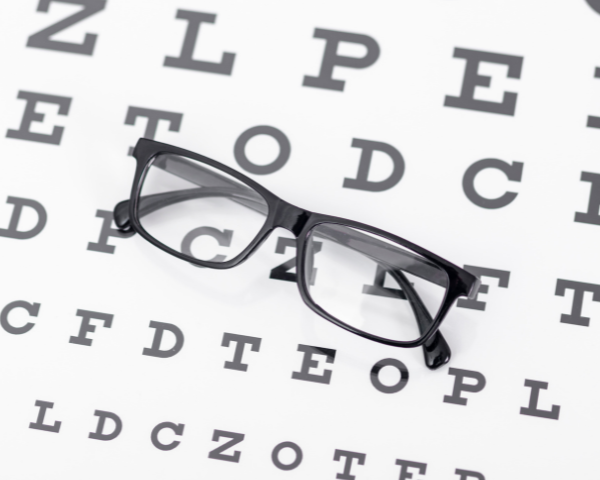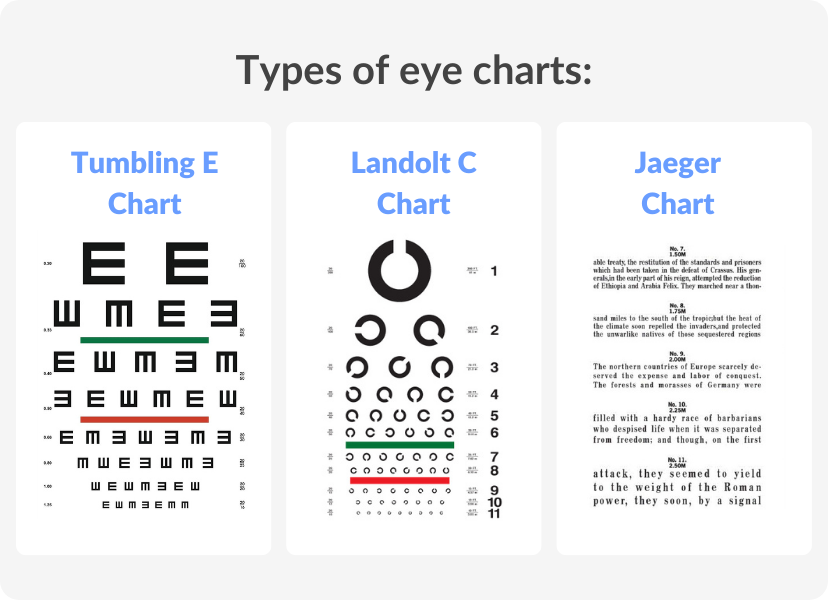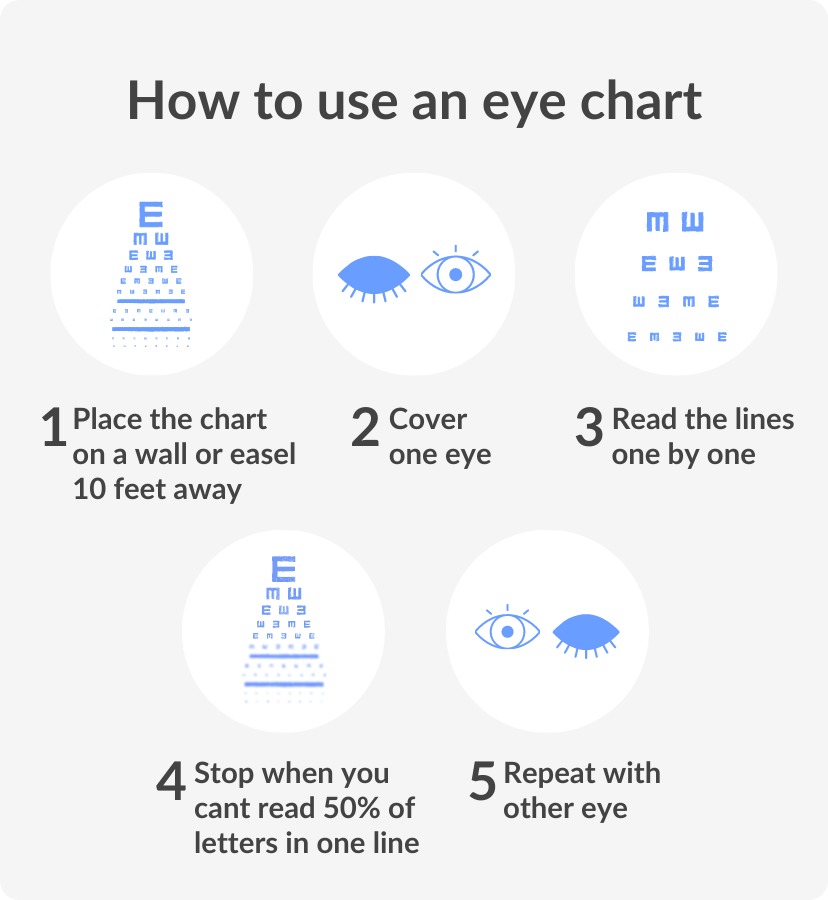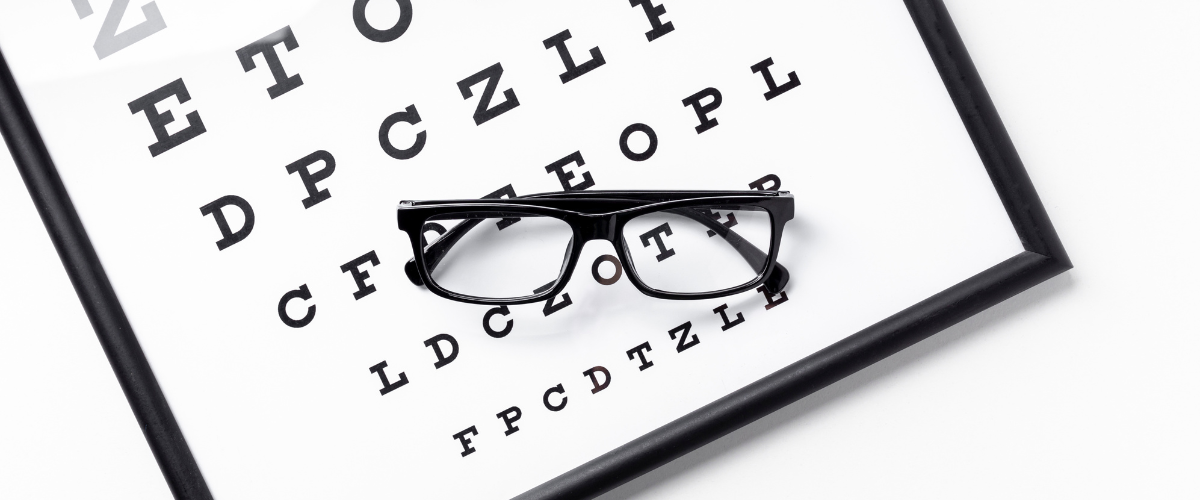Ask our dispensing optician
Your request was successfully submitted!
Eye Charts: Everything you need to know

Reviewed by
Beck Jinnette
We’ve all been there — sitting in the optometrist’s office, eagerly awaiting the news of whether we need glasses or if we have normal vision.
One of the first tests they do is to have you read an eye chart. Have you ever wondered what an eye chart actually is and how it works? In this article, we will explain exactly what an eye chart is and give some examples of different types.
Whether you’re trying to figure out if your distance vision needs help or are just curious about why these charts are used by optometrists worldwide, keep reading for everything you need to know!
When you go to the eye doctor, reading an eye chart is often part of the checkup. This chart helps measure how sharp your vision is. This measurement is known as visual acuity. If you don’t use glasses or contacts, the results from the eye chart help determine if you need them.
On the other hand, if you already wear corrective lenses in some form, the chart results help your eye doctor determine if any changes are needed for your prescription.
What are the different types of eye charts?
Eye charts play a crucial role in assessing visual acuity and measuring the sharpness of our vision. There are several types of eye charts used by eye care professionals, each serving a specific purpose.
Snellen Chart
The standard Snellen eye chart is the most widely recognised chart. It consists of multiple rows of letters, with each row decreasing in size.
Tumbling E Chart
The Tumbling E chart is commonly used for young children or individuals who are unable to read letters. Instead of letters, it features the letter “E” in different orientations that the patient can identify.
Landolt C Chart
The Landolt C chart is similar to the Tumbling E chart but uses the letter “C” in various orientations. Like the others, it assesses visual acuity and helps determine any astigmatism present.
Jaegar Chart
The Jaeger chart is specifically designed to assess near vision. It consists of paragraphs or blocks of text in varying font sizes, allowing the doctor to evaluate reading ability.
These are just a few examples of the eye charts used during eye exams. Eye care professionals carefully select the appropriate chart to accurately assess your visual acuity and prescribe the correct eyewear if needed.


How will your doctor use the Snellen eye chart?
To ensure accurate results and avoid memorization, it’s recommended to have someone assist you during the vision test using the eye chart. If you wear eyeglasses or contact lenses for tasks like driving or seeing at a distance, remember to wear them during the test.
Here's a step-by-step guide of how it will proceed:
- The chart will be positioned on a wall or easel exactly 10 feet away from you.
- You will cover one eye using your hand, a large spoon or any object that completely blocks the vision of that eye. Avoid applying pressure, as it can affect the eye’s vision during the test.
- Identify a line on the chart that you can comfortably read, then read the letters on that line aloud. Your doctor will stand nearby and record your accuracy.
- Continue attempting to read the letters on each progressively smaller line without squinting.
- Your doctor will stop you when you fail to correctly identify at least 50% of the letters on a line.
- Switch to the other eye and repeat the process.


How to read eye chart results
A standardised eye chart exam is a crucial part of monitoring your eye health. Although possessing perfect vision is an ideal scenario, many of us require some form of correction to maintain good eyesight.
Once you’ve completed the Snellen visual acuity test, understanding the results can be daunting. But fear not – interpreting them is a simple process.
Your score will indicate your visual acuity or the clarity of your sight at various distances. The lower your number, the better your vision. If your score is higher, it means you may need correction aids such as glasses or contacts. Remember to schedule regular eye exams to ensure you’re up-to-date on your eye health status.
Does 6/6 visual acuity mean perfect vision?
Visual acuity is a measure of how sharp a person’s vision is and a normal visual acuity is typically considered to be 6/6. However, many people often mistakenly believe that having 6/6 visual acuity means that they have perfect vision. This is not necessarily true.
Visual acuity testing only measures a person’s ability to see at a specific distance, usually 20 feet away. It does not take into account other important factors such as depth perception, colour vision and peripheral vision.
Additionally, a person’s visual acuity can be affected by a variety of conditions such as cataracts, glaucoma and age-related macular degeneration. So, while having 6/6 visual acuity is certainly desirable, it does not guarantee perfect vision due to other factors.
DID YOU KNOW
Although 6/6 visual acuity is widely known as perfect vision, there are a number of other eye health factors that means this is not the case for everyone.
What is the history of the Snellen eye chart?
The eye chart, a fundamental tool in assessing vision, has an intriguing history. In the mid-19th century, a Dutch ophthalmologist named Herman Snellen introduced the Snellen chart, revolutionizing eye testing. This chart featured rows of letters in various sizes, enabling doctors to measure visual acuity with precision.
Over time, other types of charts emerged, such as the Tumbling E chart for children and the Landolt C chart for astigmatism assessment. The development of standardised eye charts paved the way for consistent vision testing worldwide.
Today, digital advancements have enhanced the testing process, but the basic concept of the eye chart remains a cornerstone in eye care, helping professionals diagnose vision issues and prescribe appropriate corrective measures.


What is the difference between a vision test and an eye exam?
When it comes to caring for our eyes, it’s important to understand the distinction between a vision test and an eye exam. At its core, a vision test usually involves testing visual acuity or how well you can see at a distance. This commonly involves reading letters or numbers from a chart such as those outlined in this article.
However, a more comprehensive eye exam will typically include other diagnostics, such as testing already corrected visual acuity (with the help of prescription eyeglasses or contacts), checking for colour blindness and evaluating the health of the eye itself.
Why do I need a vision test or eye exam?
These additional tests can help detect a wider range of eye issues, from basic vision problems to more serious conditions like cataracts or glaucoma.
Knowing information about the tools that eye doctors use to assess your vision can make appointments less daunting. If you would like to know more about eye health, visit our Optical Centre.





































